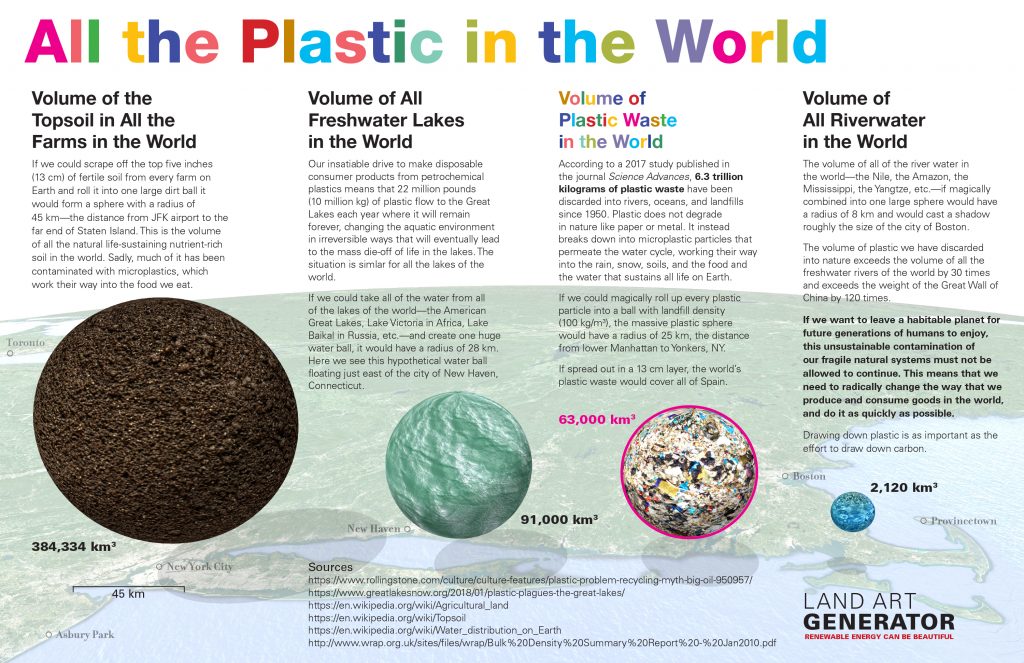
Click on the image to download the full resolution PDF.
Last week we were shocked by a statistic mentioned in the excellent Rolling Stone article by Tim Dickinson, “How Big Oil and Big Soda kept a global environmental calamity a secret for decade.”
Since 1950, the world has created 6.3 trillion kilograms of plastic waste — and 91 percent has never been recycled even once, according to a landmark 2017 study published in the journal Science Advances. Unlike aluminum, which can be recycled again and again, plastic degrades in reprocessing, and is almost never recycled more than once. A plastic soda bottle, for example, might get downcycled into a carpet. Modern technology has hardly improved things: Of the 78 billion kilograms of plastic packaging materials produced in 2013, only 14 percent were even collected for recycling, and just two percent were effectively recycled to compete with virgin plastic. “Recycling delays, rather than avoids, final disposal,” the Science authors write. And most plastics persist for centuries.
6.3 trillion kilograms? What does that even look like?
First off, we compared it to the weight of the Great Wall of China. According to Google, the Great Wall of China weighs approximately 52.7 billion kilograms. So we know that all of the plastic in the world weighs as much as 120 Great Walls of China. The Great Wall is 21,200 kilometers long, or about half the circumference of the earth. So we know that we could circle the globe 60 times as a plastic wall 8 meters tall and 5 meters wide.
That is still not easy to visualize. Plastic has a different density than the rocks that make up the Great Wall, and we need to see all that plastic in one place.
What if all the plastic ever discarded were rolled up in one huge ball of plastic floating just above the surface of the earth? What would that look like?
So we found out what the density of plastic is in landfills (100 kg/cubic meter) and arrived at a volume of 63,000 cubic kilometers. 6.3 trillion kilograms of plastic would therefore roughly come together in a sphere with a radius of 25 kilometers.
What do we have to compare that against?
We decided to take some other measurements of the things that sustain life on Earth: all of the fertile soil, and all of the lake and river water on the planet and run the same calculation. If it was all neatly collected into a huge sphere floating just above the surface of the earth, how large would these objects be?
Hopefully this graphic comparison will give you pause. We long ago surpassed the volume of river water on the Earth with discarded plastic volume. We are getting close to matching the volume of all of the water in all of the freshwater lakes of the world, and if we spread out all of our discarded plastic in a 13 cm layer it would cover all of Spain!
Sadly we are not able to remove all of the plastic from the environment, place it in one massive 50 km wide ball, and let it drift into space. Instead it is finely distributed in the rain that falls from the sky, in water from our taps, and in every bite of food that we eat.
Enough of this insanity. We’ve got to solve this.
